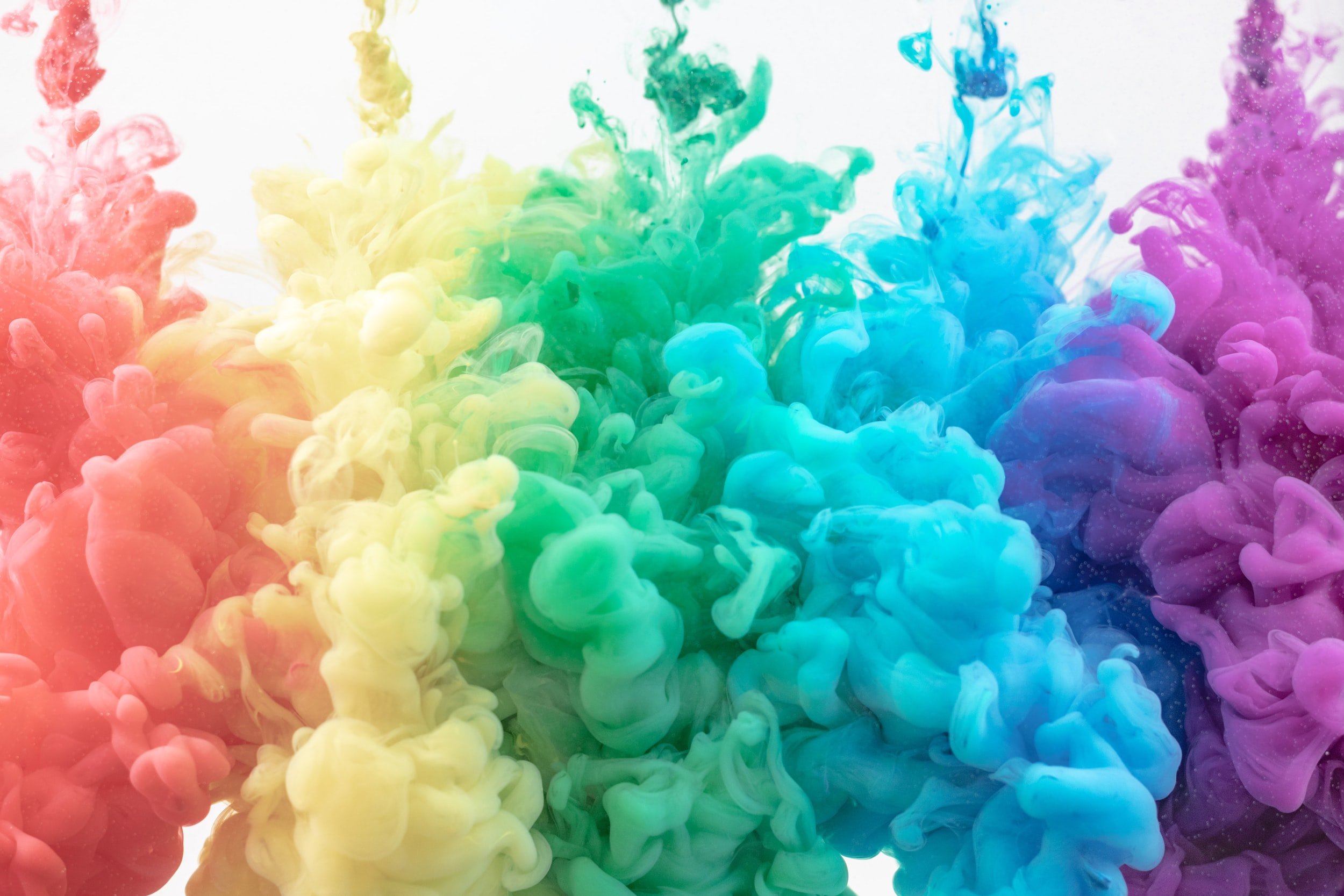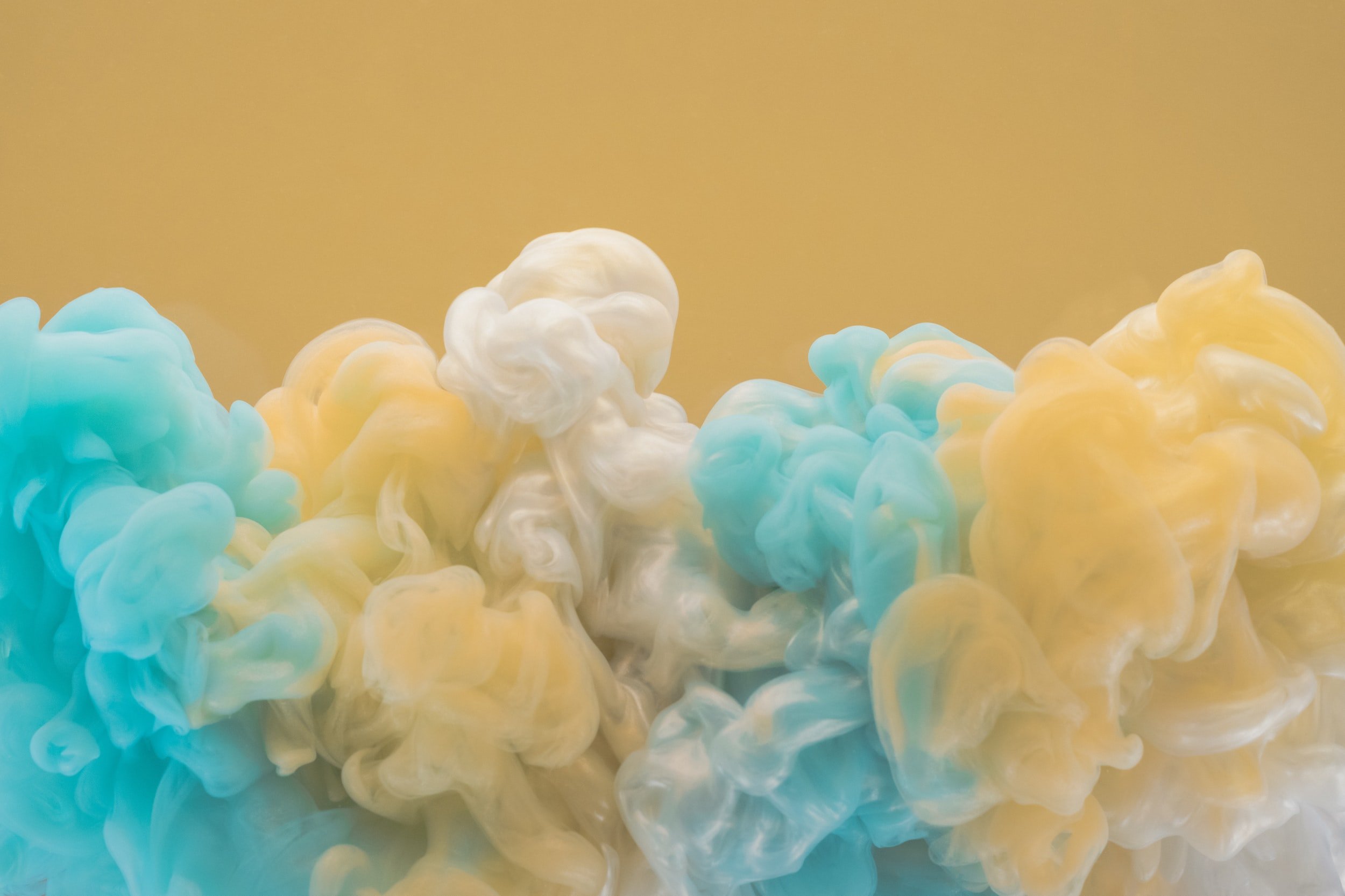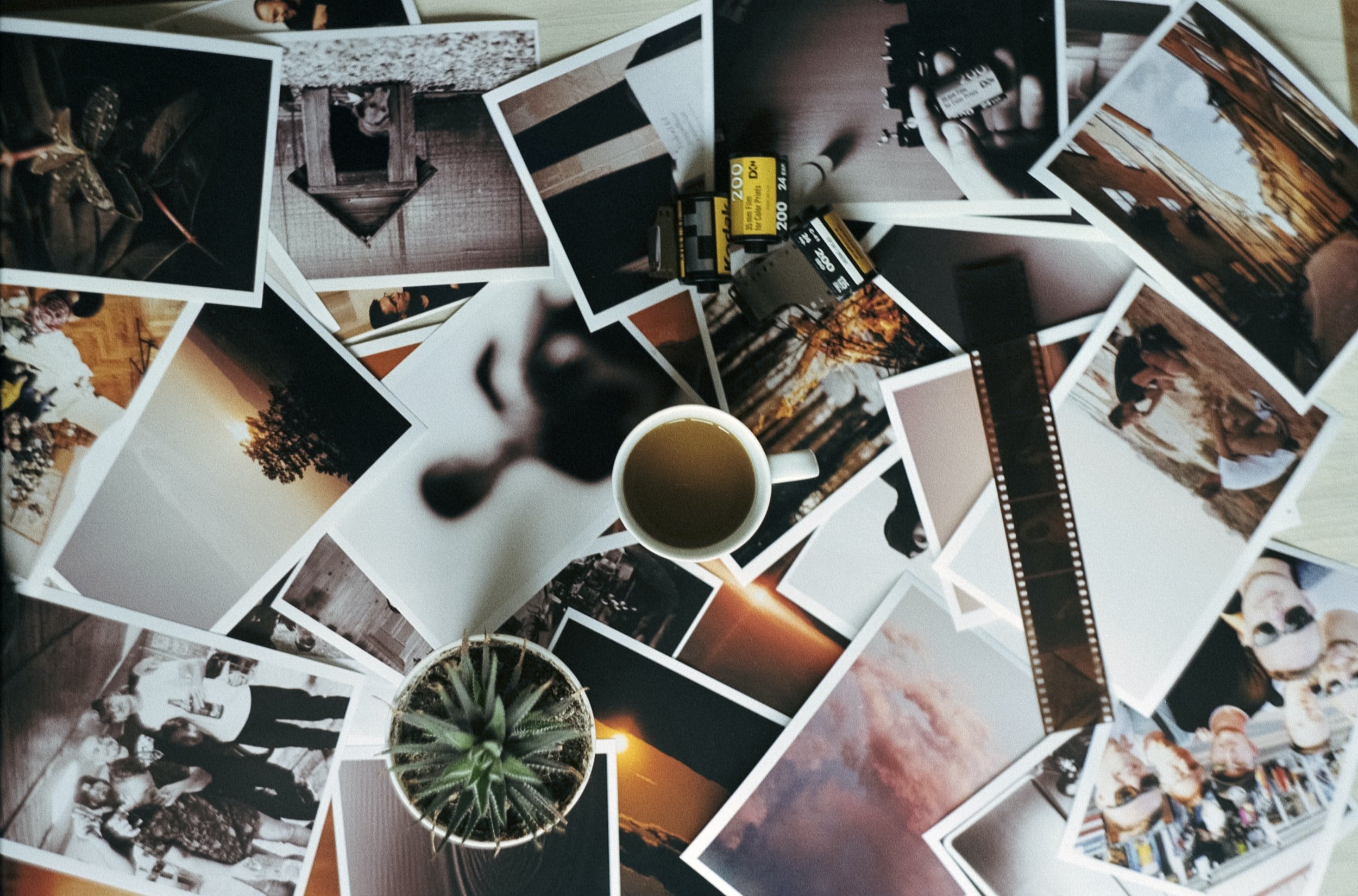5 Ways Art Therapy Can Boost Self-Esteem
Have you ever thought…
I can’t make art.
I’m not creative.
I can’t draw.
Art is only for kids.
Art isn’t a strength of mine.
Then you might be thinking: art therapy would decrease my self-esteem, not boost it! A lot of people might wonder, how does art therapy work? how would art therapy make me feel more confident I’m not even good at art?
In this post, I’ll answer these questions and I’ll cover 5 unique ways that art therapy can actually increase our self-esteem - and how.
1) Realizing How Creative We Are
Most of us do things we’re not completely confident about every day, and we can all most likely remember how it feels to try something new or uncomfortable. Here are some examples:
Taking a new workout class or making time to workout
Getting better at conflict or “fighting fair”
Sharing something we’ve never told anyone or talked about before
Learning to drive or driving in a new area
Interviewing or starting a new job or school year
Trying to tend a garden or keep plants alive
Trying out a new recipe or cuisine
Speaking up to a boss or coworker
Getting a different haircut or trying out a fashion trend
Holding a boundary or saying “no”
Resting more or using all of our vacation time
These things aren’t always easy, but they’re often rewarding. And, they’re all examples of engaging in the creative process! We do so many creative things throughout the day, we just don’t always label them, or ourselves, as creative or artistic. The creative process involves things like problem-solving, developing insight, vulnerability, flexibility, mistake-making, failing, making connections, putting in the effort, and being brave.
You are creative at your job, at home, in your hobbies, and within your relationships.
Most of us don’t dislike art or creativity, we just may believe it’s not for us because we’re usually thinking about the outcome - how “good” or “bad” it will be - before we begin. I get it. We usually learn that art is about the product at some point in our life. What if art was just about exploring and experimenting and trusting where we go with it?
In art therapy, there’s no “good” or “bad”, no comparisons, no grades or critiques, and there’s no judgment. There’s an emphasis on trying and seeing how it feels, what you think, what it brings up for you, and where you want to go with a piece of art. It acts as a way to externalize our thoughts, hold our emotions, and depict our experiences. It offers new ways to “see” ourselves and our challenges.
We’re able to realize that we’re inherently creative - and this feels good! Using the creative process to understand ourselves is something we all can do and benefit from. We see that there’s no need to produce something “beautiful” or “acceptable”, and instead, we can just allow ourselves the room to feel whatever we need to. This process parallels the work of therapy to trust, accept, and honor what we truly feel.
And listening to our needs is essential for healing, which brings me to the next point.
2) Listening to Our Needs
Art therapy encourages feeling our emotions deeply and honestly and honoring what we are drawn to use. What are we drawn to talk about in therapy? What materials feel right to capture our emotions? Sometimes, this looks like smashing clay; other times, carefully painting a landscape. A lot of the work in art therapy tends to be this permission to just listen to what we’re drawn to instead of focusing only on the outcome.
This process reaffirms that our worth is intrinsic - we don’t have to prove anything through what we make - simply playing around with materials is enough.
Self-esteem can get a boost just through the act of allowing ourselves to slow down, stop judging, and release what we’re holding. Tuning into whatever we need to process in therapy is essential because we learn so much about self-trust and acceptance in that space that we can bring into the world outside of the therapy room.
The creative process can help us feel safe to explore and try out new ways of being.
This leads us right into the third way that art therapy can improve our self-esteem!
3) Trying New Things
Experimenting takes place all the time in art therapy sessions. There are new materials to try, modalities to explore, and endless ways to go about the creative process. Experimentation can open us up to the awareness that simply playing around and taking time to make mistakes or figure out solutions can be healing.
When we go into a situation with the goal to experiment, it takes the pressure off of creating a product. We learn to listen and tune into ourselves. Sometimes, a sign that you’re doing the work in therapy is ending up with more questions than answers.
We live within systems where many of us receive strong messages to have it all together, and not show our mistakes, vulnerabilities, strong emotions, or shortcomings. We end up holding so much of our experiences inside of us, especially those moments when we felt guilt, shame, or grief. These are things we need to talk about in order to heal, yet we may be sent the message to get over them, let them go, move on, be strong, or not to speak about them.
These are all the experiences that make us human, and though they are nothing to be ashamed of, it can be fear-inducing to take the step to talk to someone. When we learn that we can let these feelings out in a safe space, we are often able to find more clarity around what challenges us and our inner strengths. It’s how we connect the dots, form new patterns, and release old ones. We often unlearn old patterns and realize that it is safe and healing to try something new.
Our self-esteem can suffer when we hold our stories within us and don’t have a safe place to let them out. Creating art, writing, or using other modalities are all safe places to let our stories out into. Letting it out is a process of transformation. In art therapy, we’re constantly doing new things and realizing that we’re okay, we’re safe, and we’re healing.
Trying new things is liberating when we get to explore without pressure. It’s satisfying to listen to our intuition, instead of the rules. It’s freeing to get in touch with our inner voice and see where it wants us to go. We learn to step into ourselves more and it’s amazing when we can see that our artmaking often takes us exactly where we need to go in our therapy.
4) Learning & Integrating
Art is a powerful tool for learning about ourselves. When we engage in the creative process, we gain insight into our unconscious. We begin to understand things about ourselves that aren’t in our conscious awareness. The more you come to understand yourself, the more you can integrate what you learn into your life.
My art therapy clients often share different versions of the same sentiment that is something along the lines of, “wow, I can’t believe how much this one piece of art can tell me about myself”. One of my favorite things is to watch someone make connections and realizations that they’re ready to make. I guide my clients, but they do this amazing work. It’s such a privilege to witness them grow into more and more confidence over time!
That brings up another way that art therapy boosts our self-esteem - when anyone makes a piece of art, it will never reveal something the person isn’t ready to see. Art doesn’t work like that. It can be helpful to think of a drawing or painting that might be done in a session as though it’s a piece of a bigger puzzle.
Have you ever sat down to do a 1,000-piece puzzle?
It takes time, and energy, and typically moves slowly. There’s some sorting, and organizing (and perhaps even a bit of conflict) and eventually, you’re getting this picture. It’s becoming something!
Art therapy works the same way. We begin to see a narrative take shape over time, and we piece things together, collaboratively. As we learn more, we make more connections. We see more and understand deeper. All of this is to say…
Looking at a piece of art is like looking a single puzzle piece.
It gives us information, and it guides us, but it’s not the entire picture. It’s a part of a whole - of a bigger, more complex process - that we’ll be working away at. Our psyche is intuitive; it gives us tiny puzzle pieces, one at a time, to keep us balanced. Our unconscious never seeks to overwhelm us.
Learning about ourselves is empowering. When we deeply know who we are, our self-esteem increases. When we integrate that knowledge into our life, we often find that our relationships, jobs, and overall well-being improve. Art therapy encourages us to accept all of our experiences and emotions, not just the positive ones, as essential and necessary. When we can embrace even the toughest parts of our story and share it, we often find that we can step into a more full sense of confidence.
5) Uncovering Strengths
A common question I get as an art therapist:
“So, you can analyze me based on my art, right?”
Not quite. (Scroll up if you haven’t read the puzzle example!)
Art therapists cannot assess someone based on one drawing. As you can imagine, this just isn’t possible (or even desired) because art is an extension of the artist, and where they are in that moment, which makes finding meaning nuanced and complex.
Art therapists aren’t looking at your art to analyze you and find some kind of weakness. In therapy, art is a way we can discover our strengths and realize them more fully.
While I am trained to “see” certain things in artwork (e.g. stage of development, indicators for possible depression or anxiety, cognitive functioning), my perspective is based on supporting clients to identify and utilize their strengths. If I do notice something, it’s important to me that I give my clients space to make their own connections whenever possible. Staying curious and supporting strengths is often what creates a strong foundation to make these connections.
Self-esteem is often improved when we have someone who notices the inherent strengths that make us who we are. We all have different strengths to appreciate and honor. It can be difficult to accept ourselves fully, especially if our family, culture, or any person told us or made us feel at any point that we weren’t “enough”. Art therapy helps us to uncover our authentic selves and the strengths that go along with them.
We find real strength when we learn to embrace all parts that make us who we are. Art therapy aims to help us process all of our emotions. We don’t need to push anything away. We learn to tolerate uncertainty and discomfort better. It’s like emotional weightlifting - we get stronger over time - which can raise our self-esteem.
Art Therapy for Self-Estem
People may seek to begin or resume therapy for all kinds of reasons.
Improving self-esteem is a great reason to seek out support. Art therapy can be a way to deepen your self-esteem or uncover it. Stepping into our strengths and honoring who we really are is brave. Of course, there can be tough moments in therapy or the feeling of wanting to pull away when it gets hard. When we learn that we can continue through the messy parts, we also gain confidence in life outside of the therapy room to more deeply engage in life’s ups and downs.
If the beginning of this post resonated with you, I hope you know that art therapy isn’t dependent on skills or training, and learned a few ways that it’s about so much more than the product which all may boost our self-esteem.
If you’re interested in art therapy for you or a loved one, I’d love to hear from you. I provide virtual art therapy sessions for clients in New York and New Jersey, as well as in person in my Montclair, NJ office.






